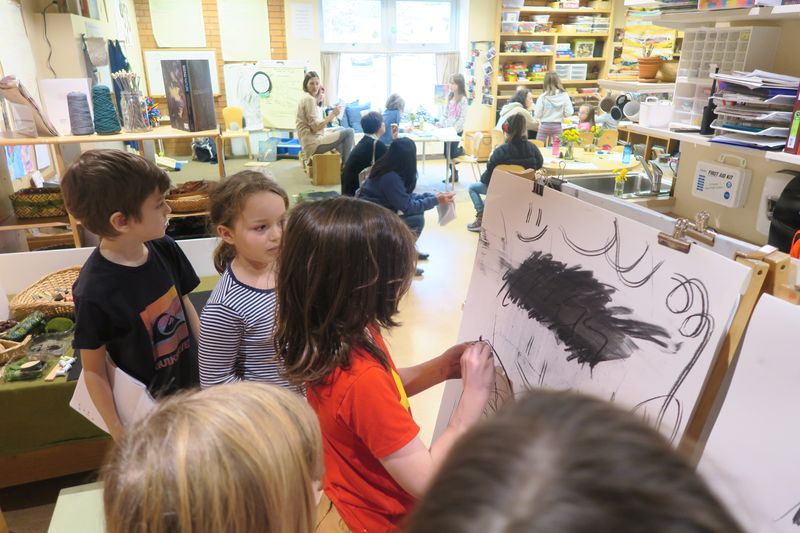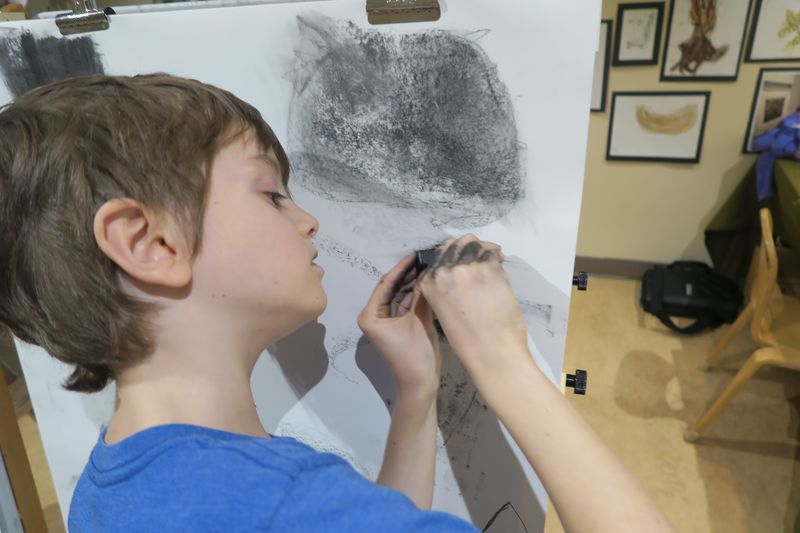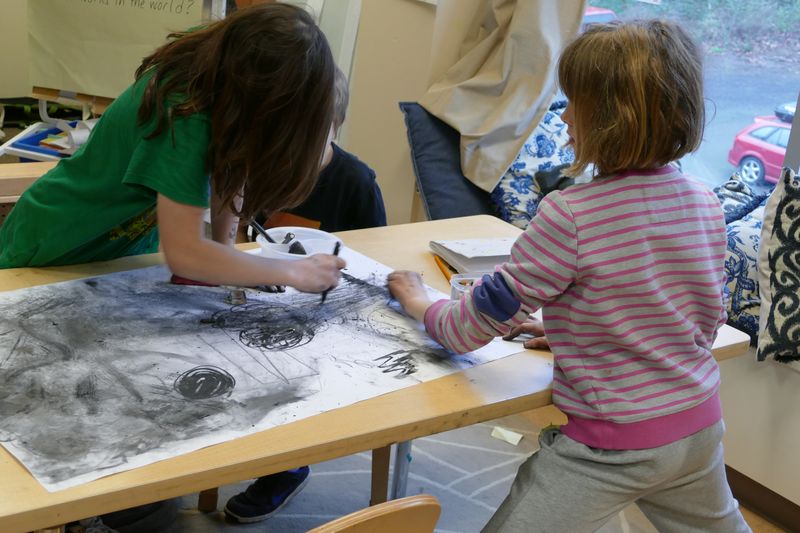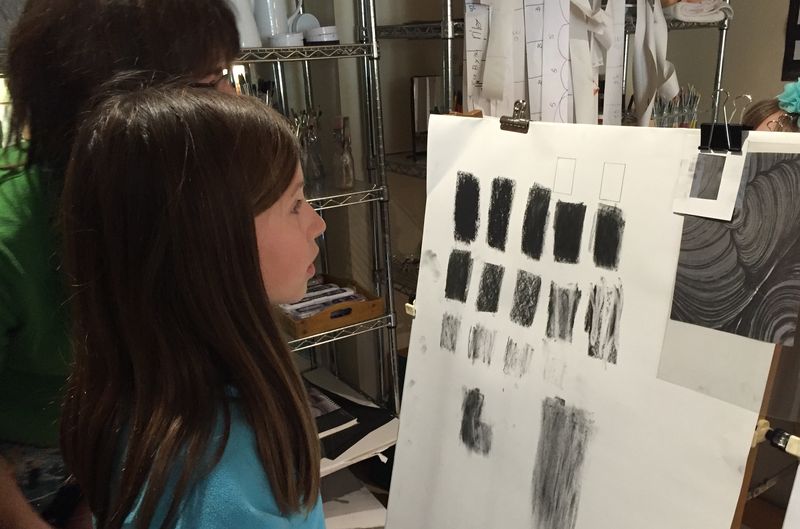Opal School third graders have been exploring charcoal as a language — a tool for thinking and expression. We began by asking: What can this material do? What colors are you finding that live inside black? As with any new material, any encounter with the unfamiliar, the children made assumptions. They were often done early in those initial explorations. They were not convinced that charcoal could do much, actually. Except make an astonishing kind of mess in a hurry. And make an absolutely spine-chilling sound if you dragged it on the paper in just the wrong way.

But as they were given (and by given I mean assigned) more time, and encouraged to dig deeper, they began to find more nuance, more possibility, and surprise. The arts may be the best tools we have to offer children a sense of possibility. And I don’t only mean the possibility in making discoveries, but also the possibility in seeking discoveries. The arts can fine tune our ability to be active in our inquiries, recognizing that there is always a layer beneath our first impressions — if we keep looking, we’ll find more.

The arts allow real development of critical habits of mind such as perseverance, inquiry, flexible thinking, striving for accuracy, innovation and much more. They strengthen wonder. But they also allow us opportunity to have tangible experience with concepts that can otherwise live pretty exclusively in the abstract. Even very young children are capable of developing language sophisticated enough to speak in powerful ways about important ideas such as empathy and social justice. But the use of the arts allow us to create metaphor with our own hands. These metaphors, as any, build and bridge understanding.

After several weeks of explorations of this new materials, I asked the children to use it to help them develop their theory of how empathy works. This was a concept that we had been developing through the use of dialogue and literature and reflection on personal experience. But the charcoal in the children’s hands allowed new depth of understanding.
OR: CN, what are those two circles?
CN: I drew them. they are the same. Empathy inside, you…if you have empathy you feel the same, and these kinda look the same.
OR: We made these two big marks because one mark is one person’s emotion. If one person was sad, you would feel the same thing as the other person. The other person feels sad, too. This one is lighter and this one is darker. Empathy is feeling what someone else is feeling.
CN: One circle is lighter, because that’s the person’s empathy. They aren’t really feeling the feeling what the dark circle is feeling. they don’t feel it as much. Most of the time it’s a little less.
OR: If you have empathy for someone, you may feel a little more than the other person. If someone is feeling sad, but then they are also feeling a little mad, it would be a littler emotion. So maybe we could do other emotions, so it shows you can have mixed emotions. Like with the darker charcoal.
CN: See these, they seem like, they are sorta the same, and sorta different.
OR: So why don’t you make some darker ones over there, to show the different emotions?
These children had started with two large circles on their paper, one very dark, one very light. As they shared ideas about empathy, the circles came to represent two people. They moved the charcoal dust from the dark side over to the light side as a way to express how one person feels what the other one does. They kept on this way until each circle became almost the same value as one another—a medium grey.
Each group approached the task differently, but in each group, the charcoal supported new meaning. As one group began to play with marks on the page, they realized how little they really understood about empathy. Although they had participated in discussion, they suddenly realized when faced with this question and a blank page, that they had no idea what empathy meant. For this group, the charcoal provided something to mess around with while they struggled to make sense.

As they made a mess and messed around, they talked with each other and with adults. And DP suddenly developed what may have been the most profound theory of the day. In one of those wide-eyed moments of clarity he said, “Empathy is a tool to make your life better!” What a complicated and complex revelation. It came together because we were playing and serious about it. We expected that charcoal to help us think, to share ideas, to encounter bumps along the way we’d need to struggle to climb. Our thinking was divergent and our hands were busy. There are no healthier conditions in which curiosity and creativity thrive.

We’ve been getting to know the charcoal for weeks by now. But like any material used as a tool for thinking, communicating and expressing, its greatest power is in reflecting us back to ourselves. What children show they can do in many ways determines who they believe themselves to be. The tools we give them matter. That we give them tools matters. The materials we use to make ideas make our ideas visible to others but also to ourselves. Beautiful questions explored through beautiful materials make beautiful ideas. What might happen if all children grew up in environments intentionally designed to invite them to see the beauty that is their birthright as human beings? What if adults planned, as a first priority, for that beauty to show up in school?







This warmed me to the bone on this chilly night…
How surprising and ultimately comforting it must be to find oneself uncovering how complex ‘understanding’ something truly is. Making sense through such a fluid exploration and dialog with materials and through friendship! …how few are these moments in life outside of childhood?!
…thank you.